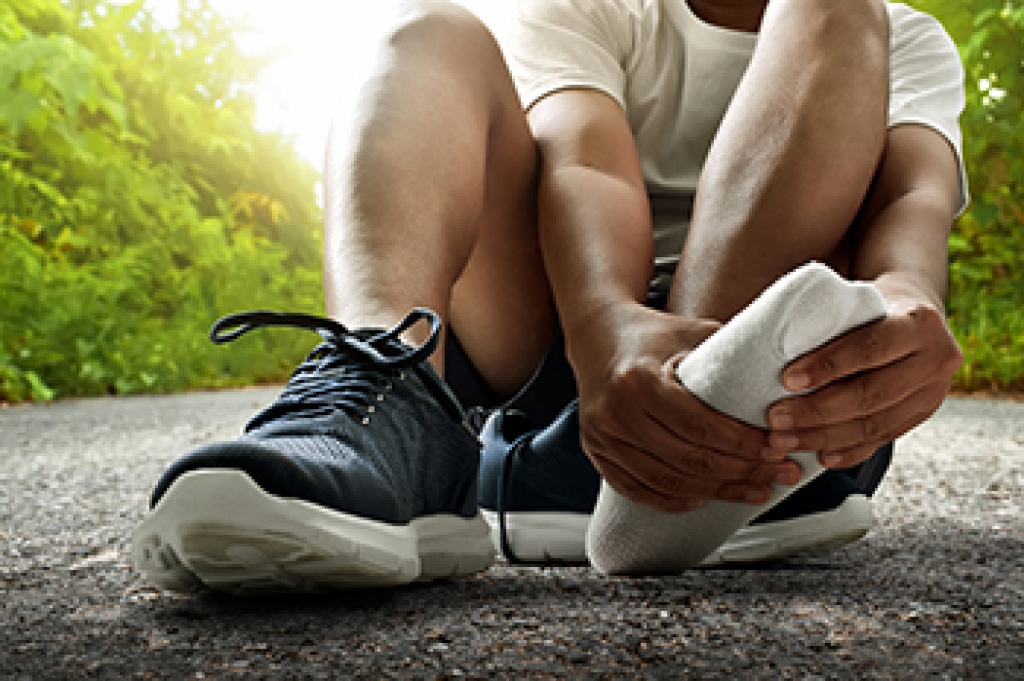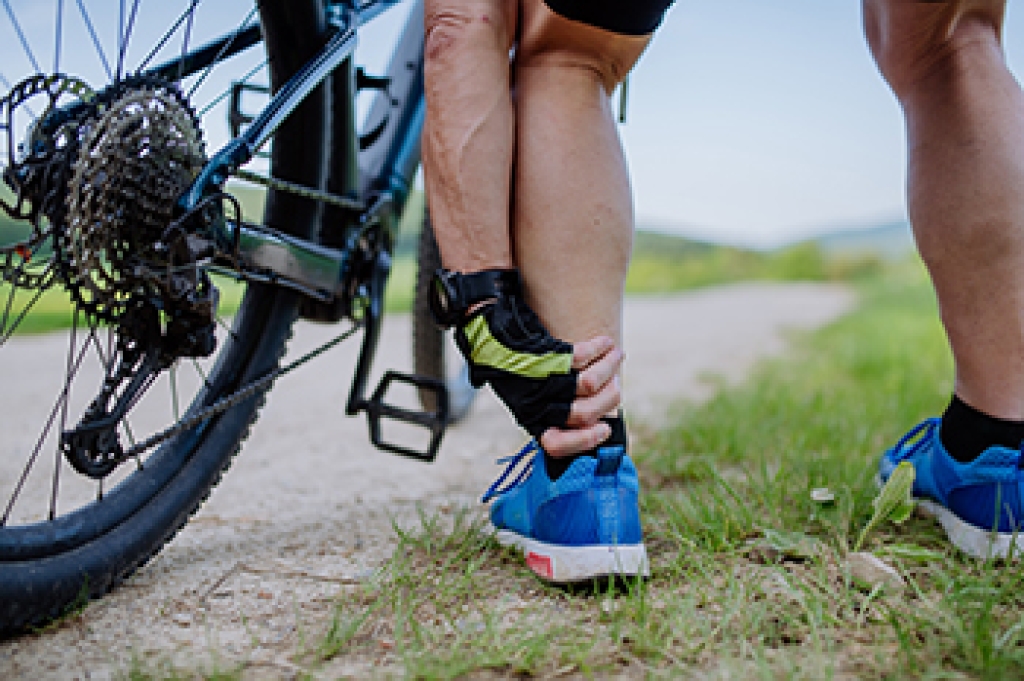Blog
Athlete’s Foot is Not Limited to Athletes

Athlete’s foot is a fungal invasion that thrives in warm, sweaty conditions. Whether you are an athlete or just someone who wears the same shoes too often, this infection can sneak up on you. It often starts as dry, peeling skin between the toes, but soon, the itching, burning, and cracking begin. In severe cases, blisters or a foul odor can develop, making every step miserable. Worse, the fungus can spread to toenails or even hands, if left untreated. Avoiding athlete’s foot means keeping feet dry, changing socks regularly, and wearing breathable shoes. Mild antifungals help, but persistent cases may need prescription medication. If your feet feel like they are under attack, it is suggested that you see a podiatrist for more advanced treatment.
Athlete’s foot is an inconvenient condition that can be easily reduced with the proper treatment. If you have any concerns about your feet and ankles, contact Peter Siroka, DPM from Connecticut. Our doctor will treat your foot and ankle needs.
Athlete’s Foot: The Sole Story
Athlete's foot, also known as tinea pedis, can be an extremely contagious foot infection. It is commonly contracted in public changing areas and bathrooms, dormitory style living quarters, around locker rooms and public swimming pools, or anywhere your feet often come into contact with other people.
Solutions to Combat Athlete’s Foot
- Hydrate your feet by using lotion
- Exfoliate
- Buff off nails
- Use of anti-fungal products
- Examine your feet and visit your doctor if any suspicious blisters or cuts develop
Athlete’s foot can cause many irritating symptoms such as dry and flaking skin, itching, and redness. Some more severe symptoms can include bleeding and cracked skin, intense itching and burning, and even pain when walking. In the worst cases, Athlete’s foot can cause blistering as well. Speak to your podiatrist for a better understanding of the different causes of Athlete’s foot, as well as help in determining which treatment options are best for you.
If you have any questions please feel free to contact our office located in Stamford, CT . We offer the newest diagnostic and treatment technologies for all your foot and ankle needs.
Running Shoes for People With Bunions

People with bunions often struggle to find comfortable running shoes that do not put pressure on the affected joint. Bunions occur when the big toe shifts inward, causing a bony prominence at its base that can become irritated by wearing tight or narrow footwear. The best running shoes for bunions should have a wide toe box to allow natural toe splay and reduce friction against the bunion. Soft, flexible uppers can help accommodate the foot’s shape, preventing unnecessary pressure. Proper arch support and cushioning are also important, as they help distribute weight evenly and reduce strain on the forefoot. A well-cushioned midsole absorbs impact while running, which can minimize discomfort and prevent further stress on the bunion. Shoes with an adjustable closure system, such as laces or straps, provide a secure fit without constricting the foot. A podiatrist can evaluate your foot structure and gait mechanics to recommend appropriate footwear, custom orthotics, or other treatment as needed. If you are a runner with bunions, it is suggested that you schedule an appointment with a podiatrist for an exam, diagnosis, and treatment options.
You should always make sure your running shoes fit properly in order to avoid injury. For more information, contact Peter Siroka, DPM from Connecticut. Our doctor can provide the care you need to keep you pain-free and on your feet.
Choosing the Right Running Shoe for Your Foot Type
Improper shoe sizing can cause a myriad of problems for your feet. Shoes that don’t fit you properly can lead to muscular imbalances in your body, which can result in foot, knee, and hip injuries.
Tips for Finding the Right Running Shoe
- Make sure you have a thumb’s width of wiggle room between the end of your longest toe and the front of the shoe.
- There should be little to no slipping at the heel
- Don’t assume your size in one shoe brand will be your size in another
- Do not lace up your shoes too tightly
- Walk around in the store with your new shoes before you buy them
If you have any questions, please feel free to contact our office located in Stamford, CT . We offer the newest diagnostic and treatment technologies for all your foot care needs.
Common Causes of Ankle Pain While Cycling

Ankle pain during cycling can result from various factors that affect the biomechanics of pedaling. One common cause is an improper ankle angle, which occurs when the foot position during pedaling is too high or low, leading to unnecessary strain on the ankle joint. Another contributor is a saddle set too high, which forces the rider to overextend their legs, putting added pressure on the ankles. Incorrect lateral placement of the cleats can also cause ankle pain, as this misalignment disrupts the natural pedaling motion, leading to excessive stress on the foot and ankle. Ensuring the correct saddle height, optimal ankle angle, and proper cleat placement can significantly reduce the risk of ankle pain while cycling, If you enjoy cycling and have developed ankle pain, it is suggested that you consult a podiatrist who can offer effective relief tips, and guide you on additional methods to protect your ankles while biking.
Ankle pain can be caused by a number of problems and may be potentially serious. If you have ankle pain, consult with Peter Siroka, DPM from Connecticut. Our doctor will assess your condition and provide you with quality foot and ankle treatment.
Ankle pain is any condition that causes pain in the ankle. Due to the fact that the ankle consists of tendons, muscles, bones, and ligaments, ankle pain can come from a number of different conditions.
Causes
The most common causes of ankle pain include:
- Types of arthritis (rheumatoid, osteoarthritis, and gout)
- Ankle sprains
- Broken ankles
- Achilles tendonitis
- Achilles tendon rupture
- Stress fractures
- Bursitis
- Tarsal tunnel syndrome
- Plantar fasciitis
Symptoms
Symptoms of ankle injury vary based upon the condition. Pain may include general pain and discomfort, swelling, aching, redness, bruising, burning or stabbing sensations, and/or loss of sensation.
Diagnosis
Due to the wide variety of potential causes of ankle pain, podiatrists will utilize a number of different methods to properly diagnose ankle pain. This can include asking for personal and family medical histories and of any recent injuries. Further diagnosis may include sensation tests, a physical examination, and potentially x-rays or other imaging tests.
Treatment
Just as the range of causes varies widely, so do treatments. Some more common treatments are rest, ice packs, keeping pressure off the foot, orthotics and braces, medication for inflammation and pain, and surgery.
If you have any questions please feel free to contact our office located in Stamford, CT . We offer the newest diagnostic tools and technology to treat your foot and ankle needs.
Ankle Pain from Ice Skating

Ankle pain during ice skating can be caused by several factors. One of the primary reasons is poorly fitting skates. If the skates are too tight or too loose, they can put excessive pressure on the ankles, leading to discomfort or injury. Another cause is poor skating technique. Incorrect posture or improper alignment while skating can strain the ankle joint and surrounding muscles, contributing to pain. Ankle overload is also a factor, as ice skating places a significant amount of pressure on the ankles, especially during jumps, sharp turns, or extended sessions. A lack of fitness or weak muscles in the lower legs can further worsen the issue, making it difficult for the body to properly support the ankles during skating. If your ankles or feet hurt from ice skating, it is suggested that you consult a podiatrist who can offer effective relief methods, and guide you on foot protection while skating.
Ankle and foot injuries are common among athletes and in many sports. They can be caused by several problems and may be potentially serious. If you are feeling pain or think you were injured in a sporting event or when exercising, consult with Peter Siroka, DPM from Connecticut. Our doctor will assess your condition and provide you with quality foot and ankle treatment.
Common Injuries
The most common injuries that occur in sporting activities include:
- Achilles Tendonitis
- Achilles Tendon Rupture
- Ankle Sprains
- Broken Foot
- Plantar Fasciitis
- Stress Fractures
- Turf Toe
Symptoms
Symptoms vary depending upon the injury and in some cases, there may be no symptoms at all. However, in most cases, some form of symptom is experienced. Pain, aching, burning, bruising, tenderness, tightness or stiffness, sensation loss, difficulty moving, and swelling are the most common symptoms.
Treatment
Just as symptoms vary depending upon the injury, so do treatment options. A common treatment method is known as the RICE method. This method involves rest, applying ice, compression and elevating the afflicted foot or ankle. If the injury appears to be more serious, surgery might be required, such as arthroscopic or reconstructive surgery. Lastly, rehabilitation or therapy might be needed to gain full functionality in the afflicted area. Any discomfort experienced by an athlete must be evaluated by a licensed, reputable medical professional.
If you have any questions please contact our office located in Stamford, CT . We offer the newest diagnostic and treatment technologies for all your foot and ankle needs.

